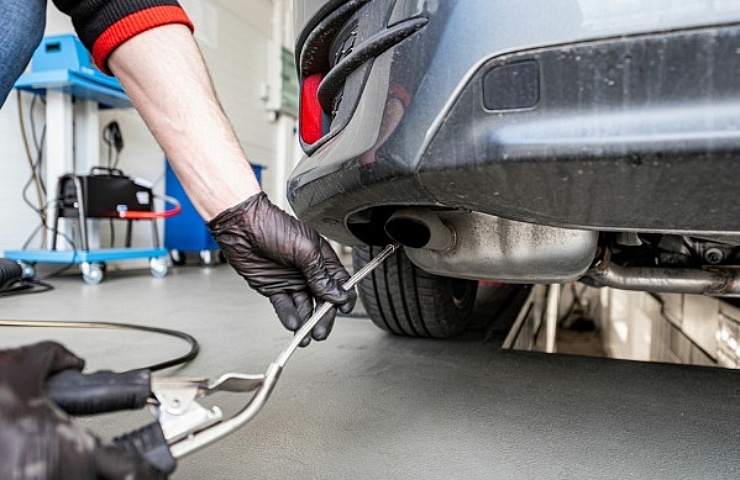Contents
A car’s emissions system comprises many components that work together to recycle unburned fuel, burn off toxic fumes, and control the amount of fuel sent to the engine. These systems are complex. A fault in just one element can trickle through the entire system and wreak havoc on your vehicle’s performance and fuel economy.
When vehicle emissions systems fail, your vehicle’s engine can spew unnecessary pollutants—and your can run poorly or stop operating altogether. If you live in a state with stringent emissions rules, your vehicle may not pass an emissions test and not be allowed to drive until the systems are repaired.
Emissions Sub-Systems
Modern vehicles use the check engine light to let you know about problems with your vehicle’s drivetrain, and sometimes, it will light up to let you know that there is an issue with one of the emissions-related sub-systems.
Read: What Does the Check Engine Light Mean?
PCV System
While emissions systems are mostly on the exhaust side, it all starts with the air intake. The positive crankcase ventilation (PCV) system controls the pressures inside the engine block—called the crankcase—by using engine vacuum to draw out combustion gasses that escaped the combustion chambers.

A simple one-way PCV valve. The brass tube end goes into the engine valve cover.
This was the first emissions system, initially developed in the 1950s, to help reduce smog in big cities. When the PCV system has a fault, you can introduce oil in your intake, which increases carbon deposits and oil smoke out of the exhaust.
Read: What Is a PCV Valve? And How to Replace One
Catalytic Converter
Catalytic converters look like mufflers but are complex units filled with ceramic honeycombs covered in precious metals. These materials get very hot—between 500 and 1,200 degrees—and use catalytic redox reactions to convert noxious fumes such as nitric oxide into free nitrogen and oxygen.
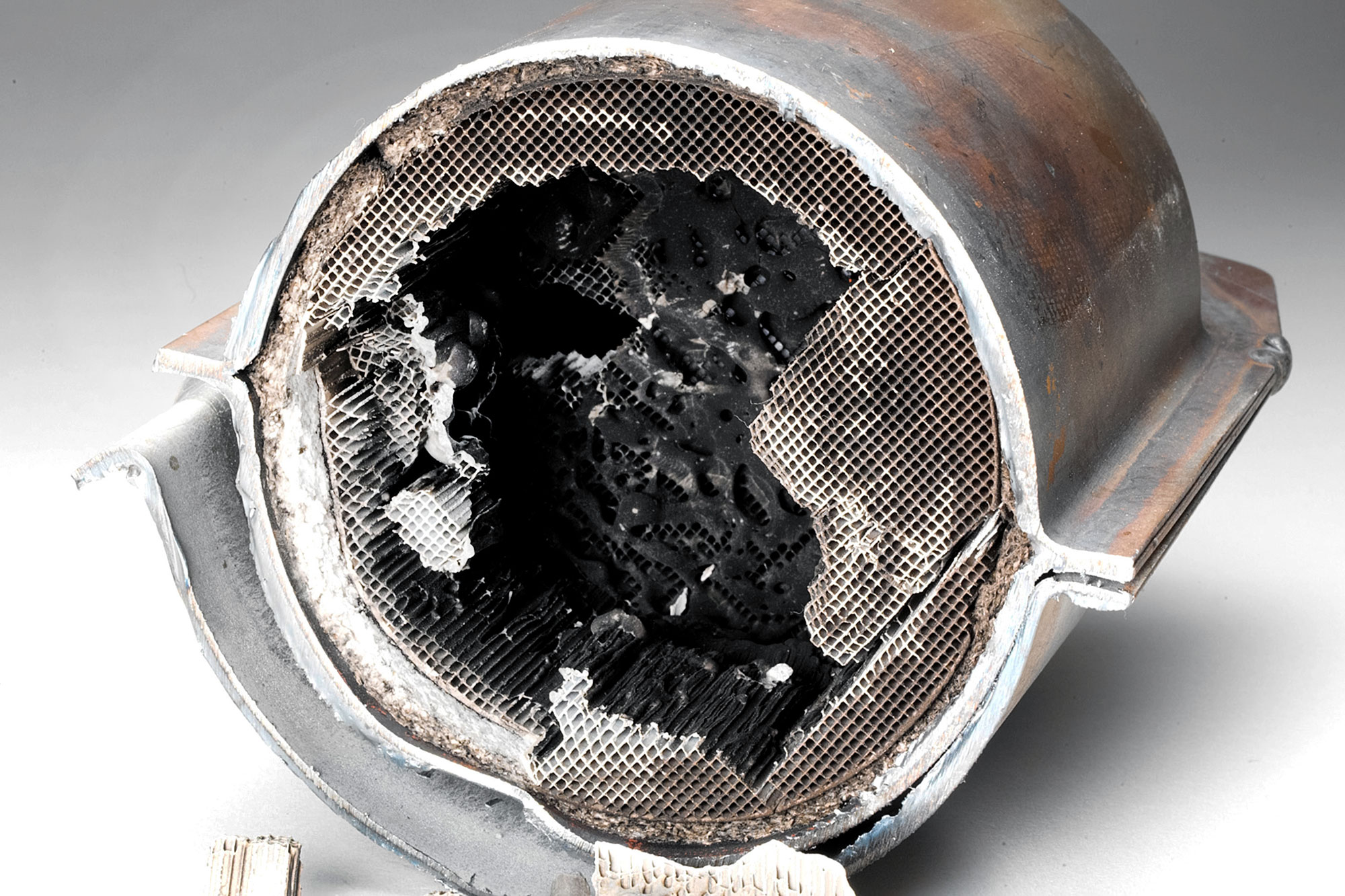
This sectioned catalytic converter shows the damaged catalyst honeycomb inside.
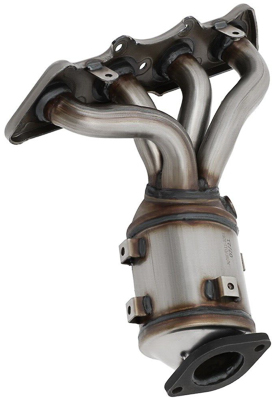
An exhaust manifold and catalytic converter
As the molecules build up on the catalyst, they begin to bond with each other to form safe gasses that are normally present in the atmosphere. The catalysts also burn unused fuel that gets through the engine. This reduces the greenhouse gas emissions of the engine.
Oxygen or O2 sensors help the ECM know how much to adjust the timing and fueling based on the readings. Cars built from the mid-1980s to the late 1990s used sensors after the cats, but modern engines have sensors before and after each catalytic convertor, providing better input and output numbers for finite adjustment. This is also how OBDII systems can be emission-checked without a sniffer.
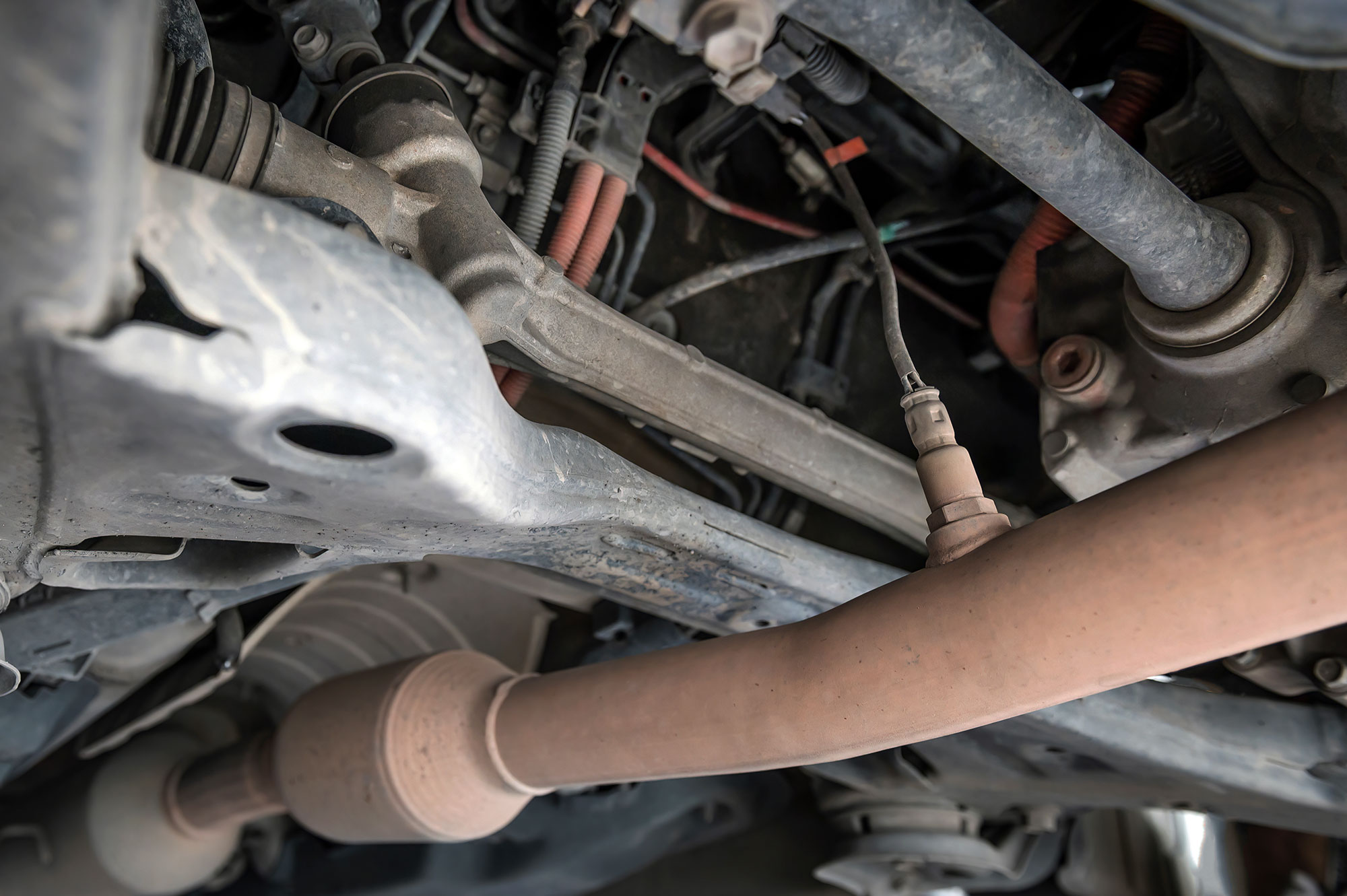
The oxygen or 02 sensor, shown at right, mounts into a threaded bung welded into the exhaust pipe.
Exhaust Gas Recirculation
The exhaust gas recirculation (EGR) system allows some exhaust gasses to be recycled through the engine to burn off excess fuel that didn’t burn completely the first time around. No engine is 100 percent efficient, leaving at least some unburned fuel to make it through the exhaust. By recycling some of the exhaust, more fuel is burned, reducing the environmental impact and increasing fuel economy.
Read: All About Exhaust Gas Recirculation (EGR) Valves
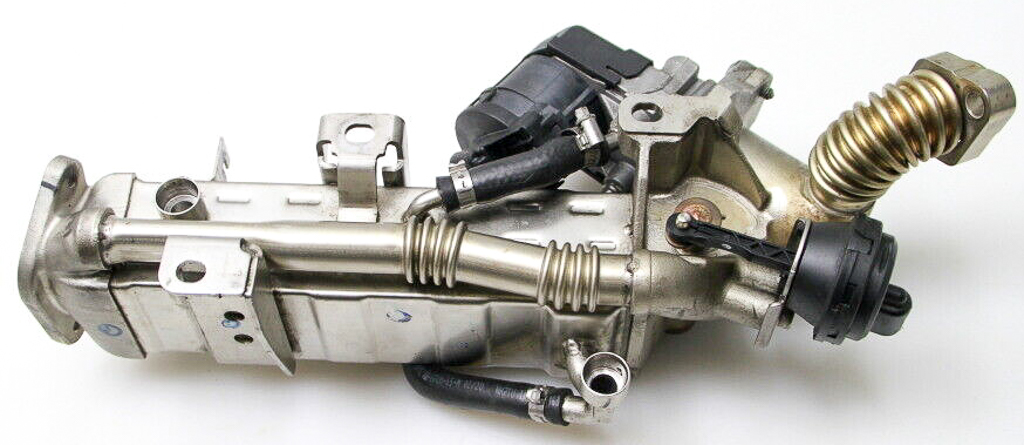
This EGR valve for BMW with integrated cooler is far more complex than most applications.
EVAP System
The evaporative emissions control, or EVAP, system is a closed loop of fuel management. It includes the fuel tank, filler neck and cap, fuel lines, fuel vents, vapor control valve, EVAP canister, and related valves. Fuel, by its very nature, evaporates quickly. These vapors are emissions gasses and must be controlled. The hotter the fuel is, the faster the evaporation happens.
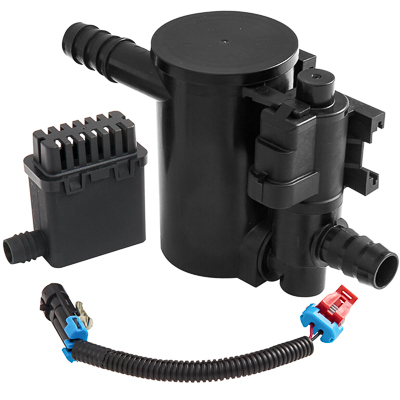
An EVAP vent solenoid valve and connector
Sealing the system helps control the loss of vapors, but a fuel system cannot be truly sealed because it could explode or vapor lock. The lines and valves control the vapors so they don’t escape the vehicle. The charcoal canister under the hood is a critical component. The vapors are directed to the canister where they are stored until they normalize, at which point they flow into the engine’s induction system to be burned along with the liquid fuel.
Shop now for air and fuel emissions partsThe EVAP system is one of the most common reasons for a check engine light to illuminate. A loose gas cap will set a code and turn on the light because the EVAP system is no longer sealed. If you ever have issues filling your gas tank—particularly if the auto shut-off keeps engaging—then you likely have a clogged filler neck vent.
Emissions Testing
More than 30 states have mandatory emissions testing using federal EPA regulation guidelines. Some require annual certification, while others allow up to five years between tests. Vehicles built after 1996 have an OBDII system, so testing can be as simple as plugging it into a machine that verifies the system is working properly and within the required specs.
Older vehicles and some states require a “sniffer” test, where a probe is put into the tailpipe and the car is run on a “rolling road” that drives the wheel on a stationary vehicle, like a treadmill for a car. Some areas use a single speed, while others require a two-speed test to verify the actual performance of the emission system.

Your vehicle won’t pass the test with a faulty emissions system.
If your vehicle passes, you get a sticker or paperwork stating it passed. If the vehicle fails, you will be notified of why it failed and will have to get it repaired before it is allowed back on the road. Some states, such as California, may even impound the vehicle and issue a massive fine if caught driving without a valid emissions test result. You will also not be allowed to register your tags, so you face a lot of legal peril.
Read: What to Expect From an Emissions Test
Emissions System Maintenance
Maintaining your vehicle’s emissions system can’t be fully accomplished in your driveway. Most of the systems can be tested through the OBDII port, but using expensive specialized scan tools. However, you can ensure that your engine is in top shape with diligent maintenance:
- Check spark plugs regularly for issues (you can check the color of the plug to determine how it is burning the fuel), and replace them at regular intervals even if it is before the OEM recommendation.
- Follow the manufacturer’s recommended maintenance schedule of oil and filter changes.
Your vehicle’s emissions systems are critical to the correct operation of your engine and are required by law to be in perfect working order. Removing any component of your emissions system is a felony, and you can face fines and imprisonment. Ensure your emissions systems are up to par, and you will be rewarded with better fuel economy and cleaner air to breathe.

